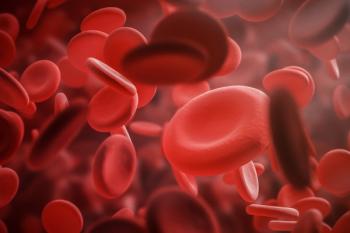
Evaluating Changes in Systemic Anticancer Therapy Use Between 2015 and 2019
While the use of chemotherapy at end of life is decreasing, the use of immunotherapy is increasing.
The use of any systemic anticancer therapy, inclusive of immunotherapy, at end of life may lead to higher rates of downstream care, delayed hospice care, and higher costs for patients. In one study, published in JAMA Oncology1,researchers analyzed patterns in systemic anticancer therapy near end of life across all cancer types between 2015 and 2019 to try to understand changes in the use of cytotoxic chemotherapy and targeted therapies.
“Use of systemic anticancer therapy at end of life is associated with increased acute care use, delayed goals-of-care conversations, late hospice enrollment, higher costs, and possibly adverse quality and duration of life,” the researchers wrote.
In 2012, the American Society of Clinical Oncology and the National Quality Forum developed the quality measure Proportion Receiving Chemotherapy in the Last 14 Days of Life, encouraging reduction in chemotherapy use and the earlier integration of palliative care at end of life. Systemic anticancer therapy has changed since 2012, with the approvals of new targeted therapies.
Recent studies show that in patients with metastatic urothelial cancer, non-small cell lung cancer, and melanoma, there has been an increase in the use of checkpoint inhibitors at end of life. Previous studies were confined to only certain types of cancer and were unable to associate end of lifetreatment rates with exact date of death.
In this study, researchers used the Flatiron Health electronic health record-derived database, including patients who were diagnosed with cancer in 2011 and on who received treatment and died within 4 years of their diagnosis. The primary outcome was the use of systemic anticancer therapy at 30 days and 14 days before death.
Researchers studied treatment subcategories like immunotherapy and chemotherapy and examined treatment rates at end of lifeacross the 6 most common cancer types within each treatment subcategory.
The rate of use of systemic anticancer therapy within 30 days of death across all cancer types combined did not change between 2015 and 2019, nor did it change within 14 days of death. However, the type of systemic therapy did change. The use of chemotherapy alone decreased between 2015 and 2019 (26% in 2015 and 16% in 2019) and the use of immunotherapy increased (5% in 2015 and 18% in 2019).
Results were most noticeable in advanced non-small cell lung cancer and urothelial cancers where an increase in systemic anticancer therapy use at end of lifeassociated with increasing checkpoint inhibitor use was observed. No difference in overall systemic anticancer therapy use at end of lifesince 2015 was observed. The approval of new immunotherapy agents has caused a great replacement phenomenon, replacing chemotherapy with immunotherapy.
Study limitations included the bias potential, unmeasured cofounding, and misclassification in analysis. Patients may have also received treatment outside the Flatiron Health network.
Disclosures: Multiple researchers reported conflicts of interest. See the full study for details.
Reference
1. Canavan ME, Wang X, Ascha MS, et al. Systemic anticancer therapy at the end of life—changes in usage pattern in the immunotherapy era. JAMA Oncol. Published online October 20, 2022. doi:10.1001/jamaoncol.2022.4666
Newsletter
Pharmacy practice is always changing. Stay ahead of the curve with the Drug Topics newsletter and get the latest drug information, industry trends, and patient care tips.































































































































